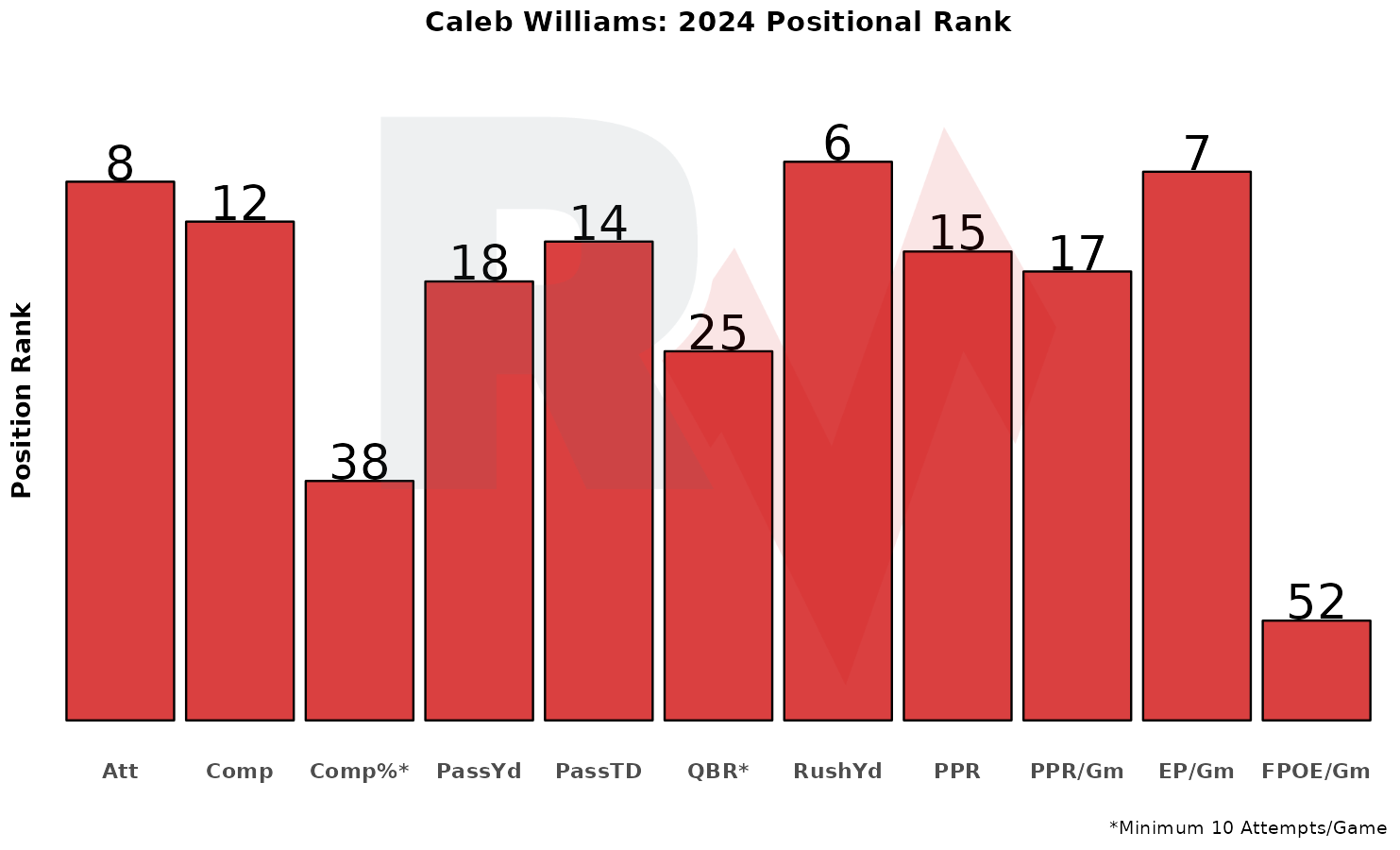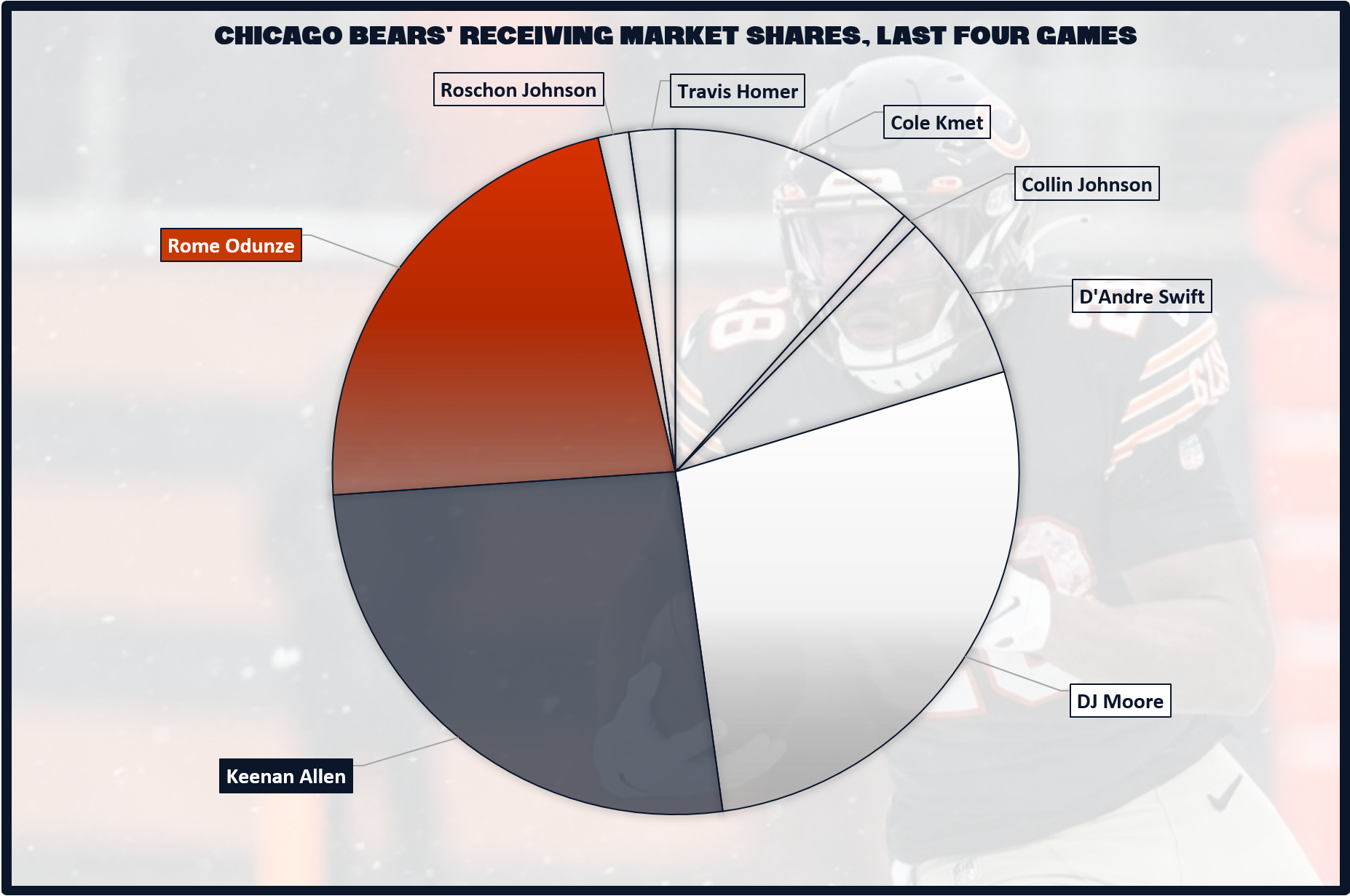
Quick Slant: MNF - This Insufferably Long Winter
Bears @ Vikings, Monday @ 8:00 PM
A team was born in the dim corners of a Chicago winter beneath the loud churn of whizzing machinery. The year was 1919, and George Halas, who had played college football at Illinois and had a cup of coffee with the New York Yankees baseball team, was hired by A.E. Staley, owner of a manufacturing plant, to found, coach, and play for the Decatur Staleys football club and join the American Professional Football Association, a group that would soon after change its name to the National Football League.
Decatur’s original roster was made up of the plant’s employees—a type of souped-up company softball team—and no one could predict how far the league, the club, or the man chosen to run it would go. Years passed, and the Staleys became the Chicago Bears, the NFL became a global brand worth billions, and Papa Bear Halas became the all-time winningest coach, a title he held until Don Shula surpassed him in 1993. The Bears’ eight championships between 1921 and 1963 were the tip of the iceberg; the game was pioneered in Chicago, and Halas became recognized as the Father of Professional Football. The Bears were ferocious, known for legends like Bronko Nagurski, Red Grange, Dick Butkus, and the NFL’s first GOAT, Sid Luckman. World War II split their 1940s dynasty—Halas himself went to the South Pacific—but the tantalizing possibility of a Celtics-esque run of sustained dominance only endures as an unfulfilled dream in the hypothetical realm.
Nearby, the Minnesota Vikings emerged in the boneyard of the icy North in 1960 as the NFL’s Manifest Destiny swept across the sixties under the guidance of newly appointed Commissioner Pete Rozelle. Under Rozelle, the league expanded from ten teams in 1959 to 26 in 1970, including the AFL merger. The Vikings were one of four teams introduced in 1960, awarded to Max Winter, who owned the Lakers. Winter had the most fitting name in the game’s history, as the Vikings became winter—both physically, thriving in a tirelessly cold biome, and symbolically, buried by decades of barren branches that have not yet borne the fruit of a championship.
Among gray skies and frozen fields, the Vikings embodied toughness. By the decade's end, Bud Grant became their coach, and the Purple People Eaters developed into one of the NFL’s most feared front lines. Ruling the outdoor Metropolitan Stadium, one of the coldest venues in the league, the Vikings became part of the land itself, their opponents suffering in bitter elements where bruises became blacker and bones rattled under chapped flesh. For decades, they have perpetually fallen short, losing four Super Bowls and other high-stakes heartbreakers like the Hail Mary Game and Gary Anderson’s impossible miss to end the 15-1 1998 campaign.
Both franchises have come within a whisker a few times, but together, they have a solitary championship spanning nearly eighty years. The ’85 Bears’ lone win feels like the long-faded relic of another life. The Vikings have never touched what they’ve searched for. And the rivalry between the two remains alive, bolstered by shared desperation and this insufferably long winter.
Bears’ Implied Team Total: 18.75
The Bears have endured one of the most hopeless and unbelievable QB droughts ever. Since Sid Luckman hung up his leather boots, they have done no better than Jim McMahon, who was the game manager for a champion propelled by Walter Payton and arguably the greatest defense ever assembled. They have seen far more of their draft picks falter: Cade McNown, Mitch Trubisky, Justin Fields, and Rex Grossman among their high-profile misses. So, when a 7-10 Bears team got a crack at the most heralded QB prospect since Trevor Lawrence, it felt like long-awaited vindication was finally on the horizon.
Caleb Williams may still become the dominant QB scouts envisioned, but for now, he is inconsistent and inefficient.

While this is not entirely unexpected from a rookie QB, we might have expected more for a blue-chip prospect who walked onto a team that nearly had a winning record already—a team fostering offensive talents like DJ Moore, Kennan Allen, Rome Odunze, D’Andre Swift, and Cole Kmet. This was supposed to be the impossible merger of a super rookie aligned with one of the most ready-made rosters ever, and yet, they've recoiled.
We may be tempted to lay all this at the feet of disgraced OC Shane Waldron, fired after Week 10. Since Waldron departed, there has been more emphasis on shorter, higher percentage throws, resulting in fewer turnovers. However, much of the Bears' gross production appears similar before and after Waldron’s firing.

In team EPA per play, the Bears are undoubtedly better since Week 11.

For the season, the Bears rank 24th in EPA per dropback and 22nd in offensive success rate on dropbacks.

For the season, the Bears are 10th in neutral pass rate and eighth in offensive plays per 60 minutes; since Week 11, the Bears are seventh in neutral pass rate and 20th in offensive plays per 60 minutes.
After Week 13, the Bears fired HC Matt Eberflus, who had been a stabilizing force on the defense after he took over play-calling duties in 2023. In one week without him, they surrendered 38 points to San Francisco. This may or may not be actionable, but we are at least on alert that the Bears may play from more negative scripts going forward if they have no one on the staff who can replicate Eberflus’s defensive influence. While trailing by seven or more, the Bears’ pass rate has only increased 3% since Week 10.
Two of Williams’s best three fantasy games have come in the past four weeks under the play calling of Thomas Brown. Even in his Week 14 blowout loss, Williams had his third-best QB rating of the year and best since Week 6.
Under Brown, the Bears’ targets have been narrowly filtered through their trio of WRs—Moore (28%), Allen (26%), and Odunze (22%). These are excellent shares for all three based on where they were drafted, and they are all playable if we trust in at least average play volume.

Moore has also had two of his best fantasy games of the year under Brown in the same weeks as Williams: Weeks 12-13. These also represent two of the only WR1 weeks Moore has had all year, so Brown’s play-calling represents a welcome addition for Moore thus far. This doesn’t include a massive leap in opportunity except for Week 13, where he drew a season-high 16 targets; otherwise, he’s on track with season norms.
Allen also popped in the same pair of games in Weeks 12-13. He had 15 targets in Week 12, a season-high; otherwise, he is aligned with his previous season outputs as well.
Odunze’s biggest performance under Brown was logged in last week's blowout loss; this was his second-best fantasy output this season. He only had five targets in Week 14, although he had ten in both Weeks 11-12, two of his three highest target earnings.
The Vikings run zone on 74.9% of their defensive plays, the sixth-highest rate in the league. They play two-high shells the fourth-most at 23.5%. The only alignment they use more than Cover 2 is Cover 3, although they use Quarters almost as much and play each of the three alignments between 20-25%.

Williams struggles against these types of defensive alignments. His fantasy points per dropback against Cover 2 is just 0.27, ranking 27th in the league. Against Cover 3, he earns 0.31 fantasy points per dropback, which is 28th. He does far better against Cover 4, scoring the 14th-most fantasy points per dropback.
None of the three receivers perform especially well against the types and rates of coverages the Vikings play, nor does Kmet. All are ranked outside the top 80 in Fantasy Points’ Matchup Expected Fantasy Points model.
The personnel matchups are every bit as bleak. The Vikings’ trio of CBs, Shaquill Griffin, Stephon Gilmore, and Byron Murphy Jr. are terrific; Minnesota is fifth in EPA per dropback and defensive success rate on dropbacks.

There is nowhere where the Bears can find a decided advantage against Minnesota’s coverage if Gilmore plays. He is questionable with a hamstring; if he is out, his work would fall to Fabian Moreau. Against Moreau, the Bears’ outside receivers, particularly Moore, could find a little extra space to work. Even so, this does not constitute a situation where the Vikings’ understudy is highly exploitable; Moreau can hold his own. Kmet’s matchup is likely not favorable either.
The Vikings hold an advantage in defensive pressure rate over expected (PrROE) generated vs. the Bears’ offensive PrROE allowed.

Williams loses 25.1 QB rating points when pressured versus clean—a substantial deficit, but better than average among qualified QBs.



